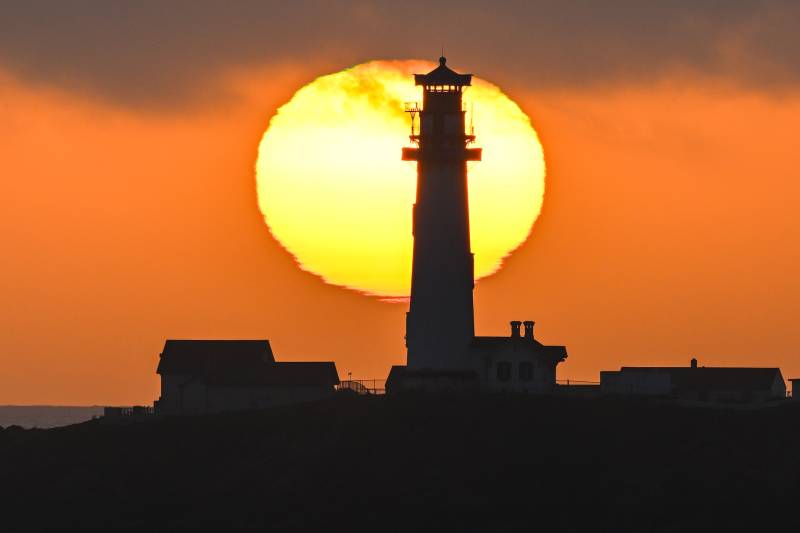“We are looking at significantly warmer daytime temperatures,” Palmer said. “Inland areas will easily be into the 90s, and we may see our first triple-digit heat for some of our inland locations. For coastal areas, there is quite a bit more uncertainty.”
A ridge of high pressure will cause the warm-up. Exactly how hot it gets, especially along the coast, will depend on where that ridge sets up and on the Bay Area’s marine layer — the cool ocean air conditioning that often cranks up this time of year, bringing the cloudy, overcast skies of “June gloom.”
A hot Sierra and a melting snowpack
UCLA climate scientist Daniel Swain said during a Friday live-streamed office hours that the heat wave would be felt most acutely in the Sierra Nevada and its foothills in the northern part of the state.
“Reno, Tahoe, up by Shasta,” he said. “These are going to be places that get really hot next week, very early in the season [and] could approach record levels for this early in the calendar year. I don’t think it’s nearly as likely that places like the Bay Area or Los Angeles are going to see anything approaching record heat, although it might still end up being warmer than average.”
The weather service’s Sacramento office issued an excessive heat watch from 11 a.m. Tuesday to 8 p.m. Thursday for the Sacramento Valley, foothills, and Delta.
State officials said earlier this year that California’s blissfully normal water year and deep snowpack could curb wildfire risk and prevent drought conditions from developing later in the summer.
However, that snowpack has dwindled to 44% of normal for this time of year, according to the California Department of Water Resources, after several weeks of above-average temperatures.
“It’s very possible the upcoming heat wave will pretty much kill off what’s left,” Swain said, which he added could “kick fire season up a notch.”
The likelihood of a fast-moving forest fire touching off in the Sierra will still be low for now. But this heat wave could “create the preconditions that make it easier to have a more severe fire season later than if we had a mild start to the summer,” Swain said.

